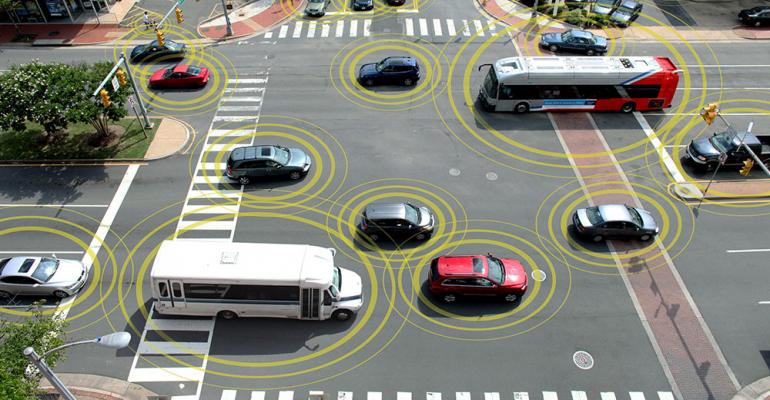NHTSA takes a first step toward making vehicle-to-vehicle technology mandatory in the U.S. with a report on the topic indicating it would cost as much as $2.1 billion for the industry to install and likely be required equipment beginning in 2020.
“Safety is our top priority, and V2V technology represents the next great advance in saving lives,” U.S. Department of Transportation Secretary Anthony Foxx says in a statement today announcing the advance notice of proposed rulemaking.
“This technology could move us from helping people survive crashes to helping them avoid crashes altogether, saving lives, saving money and even saving fuel thanks to the widespread benefits it offers,” he says.
NHTSA says in the expected report it is eyeing the addition of two technologies: left-turn assist and intersection-movement assist.
Left-turn assist would use the global-positioning system, radar and camera technologies underpinning many new cars and trucks to warn a driver against turning into the path of an oncoming vehicle. Intersection-movement assist involves two V2V-equipped automobiles communicating with each other to avoid a collision at an intersection.
NHTSA estimates the two technologies could combine to prevent as many as 592,000 crashes and save 1,083 lives annually.
It will not come for free, however. The auto industry’s chief regulator says equipping vehicles with V2V systems would cost about $329 per vehicle in the first year of the rule, expected on the books in 2020. An aftermarket kit for consumers to add to their vehicles at their discretion would cost about $252 per vehicle in the first year.
“That may even be a little high,” says Bruce Belzowski, an automotive analyst at the University of Michigan Transportation Research Institute.
Belzowski expects the cost of the systems ultimately will depend on the number of vehicles outfitted with V2V. The more units installed, the cheaper it becomes, he says.
Expect V2V to add weight, too. NHTSA estimates a factory-installed unit will add 3.5 lbs. (1.6 kg) to a vehicle. The extra weight comes as automakers are counting every ounce to make vehicles lighter and save fuel as CAFE regulations march to an expected 54.5 mpg (4.3 L/100 km) average in 2025.
However, the fuel-economy hit will be small, NHTSA says, estimating it will fall between $9 and $12 for a car over its lifetime and between $11 and $18 for a light truck. It also portends an overall fuel savings, experts say, because traffic will move more smoothly.
GM spokesman Dan Flores says the automaker, one of many working on V2V technology, believes it will make vehicles safer and supports the rulemaking.
“GM is a leader in the development of this technology and is actively participating in the industry’s collaborative efforts related to its development,” Flores says in a statement to WardsAuto. “We look forward to reviewing the advanced notice from NHTSA and participating in the process going forward.”
The U of M and Virginia Polytechnic Institute and State University also are conducting major research on V2V technology.
In Ann Arbor, MI, the U of M began the world’s broadest, real-life testing of V2V technology last year and plans to increase the number of vehicles involved to 9,000 from 3,000 today. The university also plans to build a $6.5 million autonomous-vehicle test area that would simulate a small community.
“It is a continuing process and it’s playing out,” Belzowski says of connected vehicles. “There is still a lot of work to be done but the proof-of-concept is complete and it is now a matter of rolling it out.”
NHTSA anticipates it will finish work on the rule by 2016.





